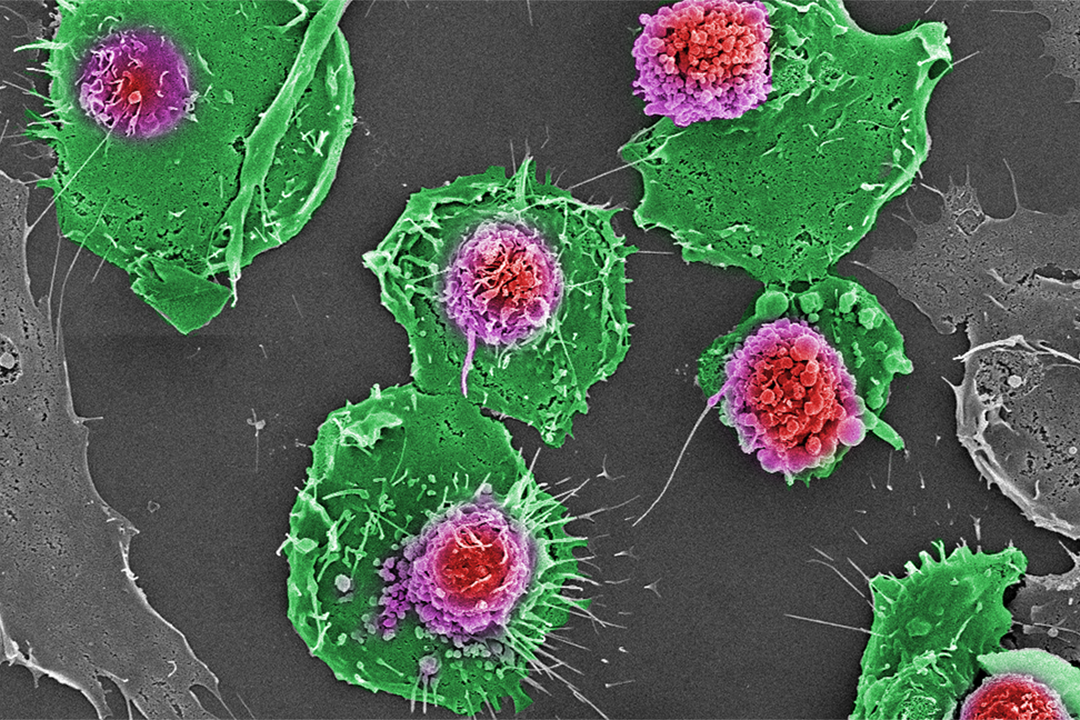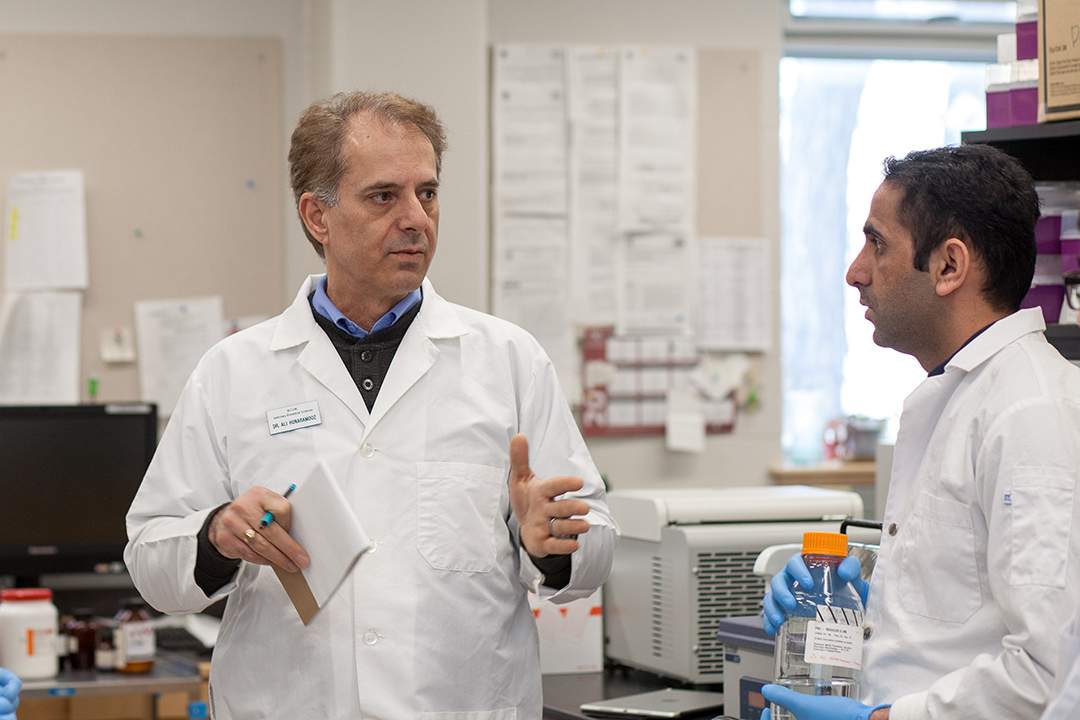
Unique stem cells hold reproductive potential
Preserving endangered species, curing male infertility, making milk that prevents disease, supplying hospitals with transplantation tissue — all of these accomplishments can be linked to spermatogonial stem cells (SSCs) and to important research that’s being carried out at the Western College of Veterinary Medicine (WCVM).
By Amalya BabayanDr. Ali Honaramooz, a professor of reproductive biology at the WCVM, studies this unique group of cells that are contained in the testis of male mammals. He has done a significant amount of work involving the study and manipulation of SSCs, and his research concentrates on the possibilities they offer through their reproductive potential. Once male mammals are sexually mature, SSCs undergo a lifelong process of multiplication for self-renewal while giving rise to virtually unlimited numbers of sperm.
During his investigations of SSCs, Honaramooz has developed unique methods for studying and using testis cells and tissue — methods that have now been adopted by many other labs around the world.
For example, Honaramooz and his team developed a process known as germ cell transplantation. This process requires that the researchers isolate testis cells (containing SSCs) from an animal and transplant them into the testis of an animal of the same species.
While germ cell transplantation alone can be a viable technique for curing male infertility in animals and potentially people one day, it also provides a new system for creating genetically valuable animals. By combining germ cell transplantation with the most recent technologies for inserting genes into the SSCs, scientists can create transgenic species — animals with modified genomes.
“We were the first to develop those [methods] and bring them to the stage where they have become viable options and models for many other labs to follow,” says Honaramooz.
For example, due to their biological similarities, pigs can be used as donors of cells, tissues or even whole organs for people. But if the human immune system detects specific molecules that are found on the foreign cells or tissue, the immune cells treat the transplanted cells as intruders and work to destroy the foreign material. This process leads to rejection of the transplanted tissue and causes further damage to the recipient.
On the other hand, through the process of genetic modification, researchers can remove the foreign molecules on the animal’s cells so the human immune system doesn’t reject the transplanted tissue.
“We are not far from a day when even a heart that has been transplanted from a transgenic pig into a human will be accepted by the immune system, allowing the patient to live for many more years,” says Honaramooz.
Honaramooz’s techniques for creating transgenic species promise to be more efficient, less time consuming and less expensive than the existing method which involves altering the actual embryos. By using germ cell transplantation, scientists can more easily develop a generation of transgenic pigs with “humanized” tissues that could be used to save thousands of lives.

These processes can also provide huge benefits to livestock industries. Honaramooz and his team are planning further research that will investigate genetic modification of SSCs along with germ cell transplantation to create dairy animals capable of producing milk that contains biochemically important proteins. For example, they hope to create dairy goats that can produce special milk containing vital proteins that can be extracted and used to cure rare diseases in people.
“Goats, sheep, and cattle can produce those important proteins that are difficult to make otherwise,” says Honaramooz. “These goats would be producing proteins that would be used for instance to fight cancer and a lot of autoimmune diseases.”
Another technology developed by Honaramooz and his team is called testis tissue xenografting. With this method, scientists grow the immature testis tissue of any mammalian species by placing small pieces of the donor testis tissue under the back skin of a host mouse. This grafting has resulted in the development and maturity of the donor’s neonatal testis and production of sperm from a wide range of species such as livestock or primates in lab mice.
There are also many valuable uses for testis tissue xenografting, which is an ideal method for preserving testis tissue and genetic material from any kind of mammalian donor. For example, this process could be invaluable for preserving the genetic material of endangered species.
Since a significant number of animals from endangered species die without ever reaching adulthood, it’s impossible to preserve their sperm in order to expand their population. However, using testis tissue xenografting, testis tissue from a premature individual of an endangered species can be grafted into laboratory animals where it will eventually start producing sperm.
“Our system is the only one that would allow [us] to produce gametes from newborn and immature animals,” explains Honaramooz. “It is rather unique, because there is not much else you can do when the animal dies the first day.”
The WCVM researchers have already shown the potential of this method with bison and white-tailed deer as donors. Their study, which successfully led to complete spermatogenesis developing under a mouse skin, proved that testis tissue xenografting can be a valuable tool for preserving wild endangered species.
These studies are financially supported by the Natural Sciences and Engineering Research Council of Canada (NSERC).
Amalya Babayan of Saskatoon, Sask., is a third-year student in the University of Saskatchewan’s College of Arts and Science (anatomy and cell biology). Her story is part of a series of articles written by WCVM summer research students.
